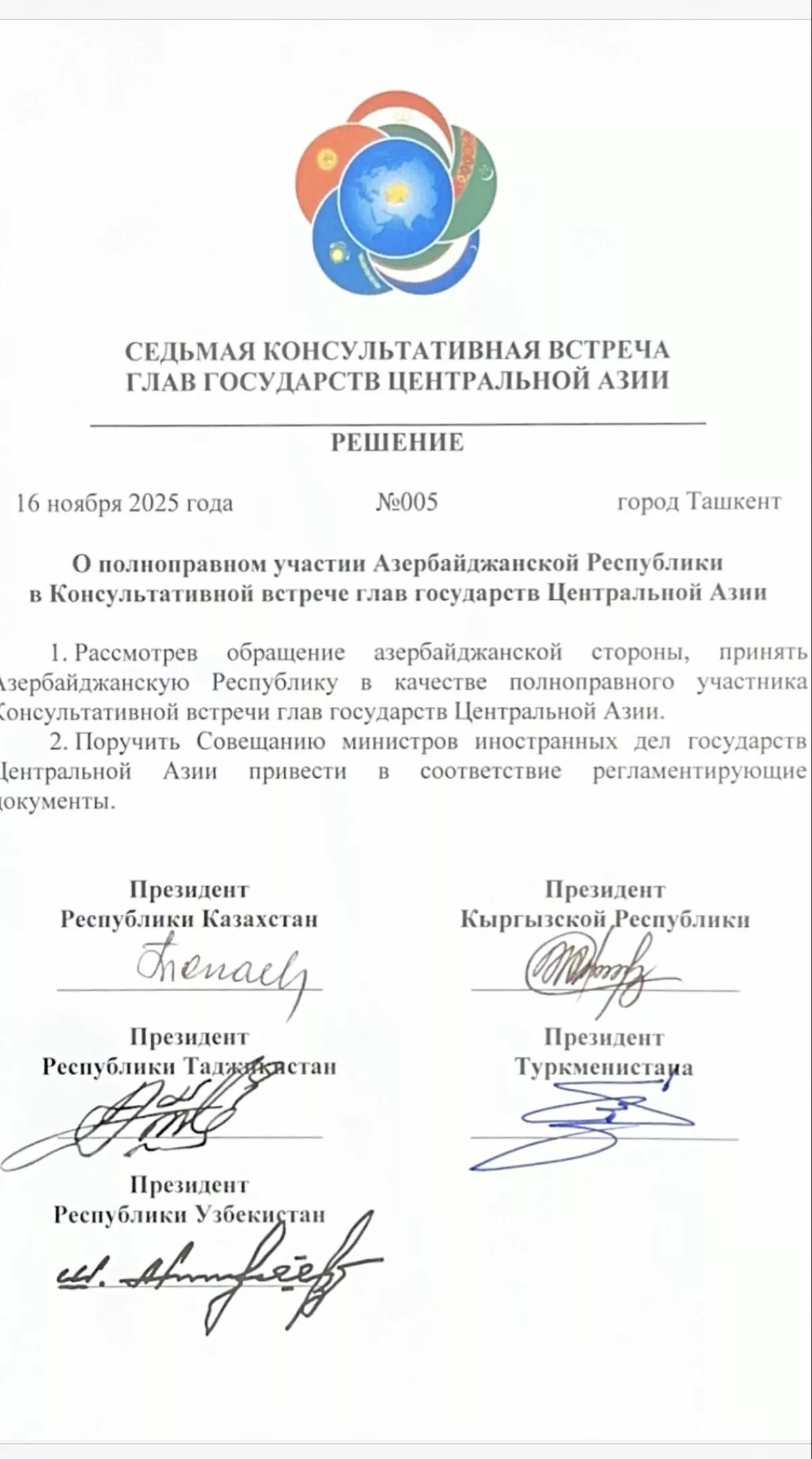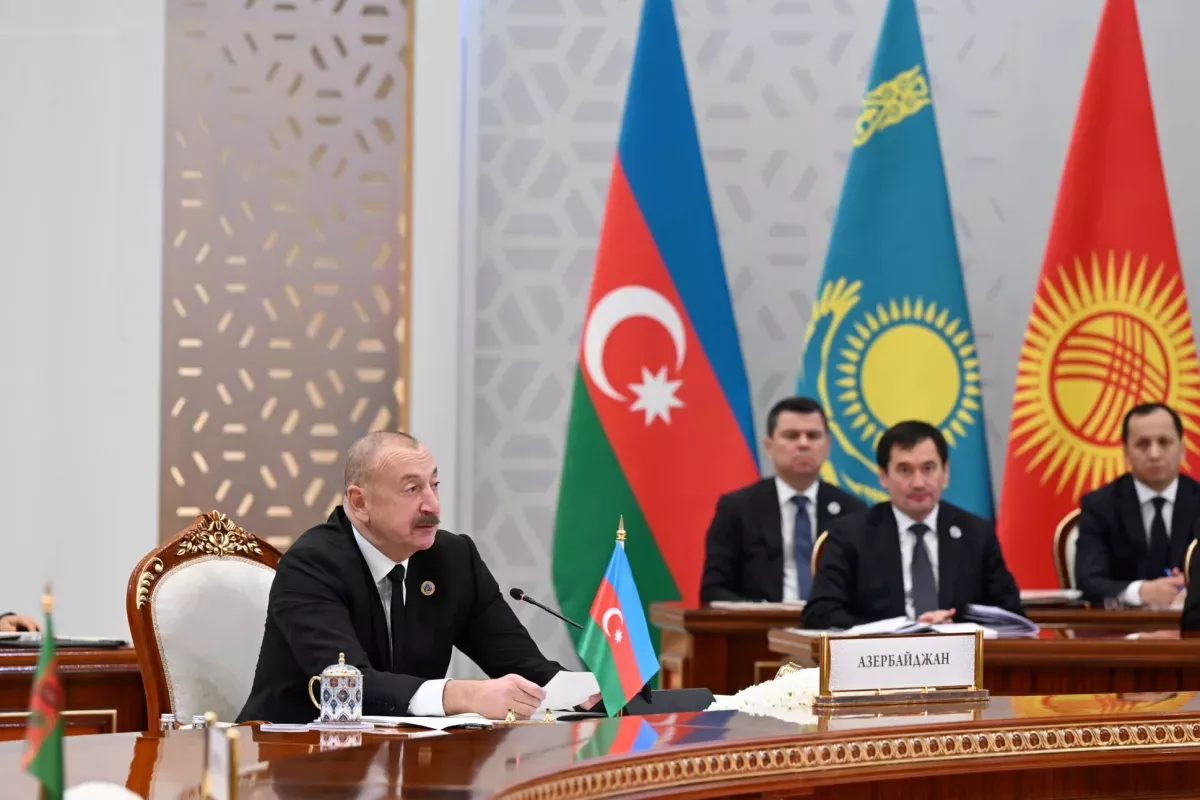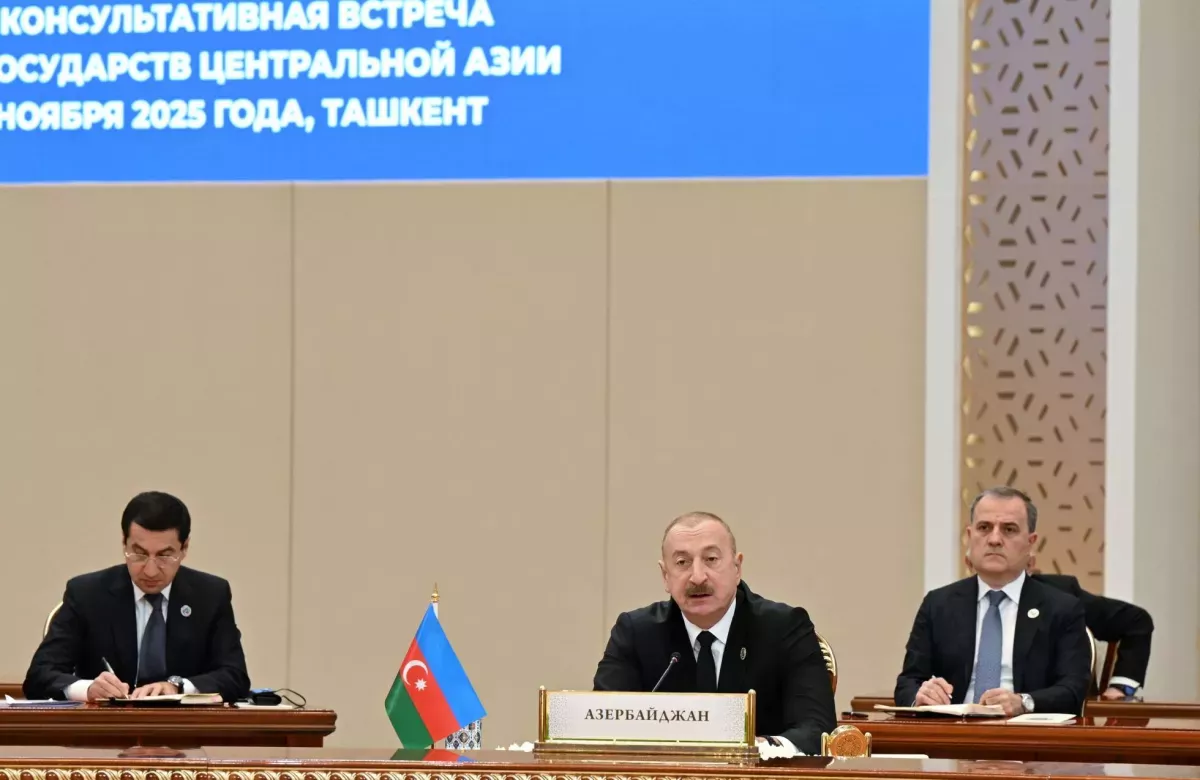Central Asia + Azerbaijan: From shared history to shared strategy An immediate analysis
In Tashkent, an undeniably significant event took place, one capable of reshaping the configuration of interregional politics in Eurasia. The heads of Central Asian states decided to fully integrate Azerbaijan into the format of the Consultative Meetings. On the political map, it is not a temporary agreement or a situational partnership that has emerged, but a new connecting line uniting countries through a shared development logic, similar geoeconomic visions, and strategic interests. The contours of this system were formed over many years—through trade, energy, transport, cultural exchange, mutual diplomatic support, and continuous contacts among leaders. Today, they have acquired an institutional form. Azerbaijan is no longer a guest participant; it is a state entering this format on equal footing.
The five Central Asian countries simultaneously confirmed that Azerbaijan’s participation aligns with the interests of the entire region.

The first speaker at the event was the President of Uzbekistan, Shavkat Mirziyoyev, who called the day truly historic. He reminded that the peoples of the region and Azerbaijan are connected by centuries of history, familial ties, and spiritual and cultural closeness, and emphasised that Azerbaijan’s integration will open new horizons in trade, economy, investment, and humanitarian spheres. According to him, the decision strengthens the strategic interconnection and resilience of both regions.
Mirziyoyev placed special emphasis on the image of a “bridge” between Central Asia and the South Caucasus. This metaphor, he said, captures the significance of today’s step. Looking at the broader picture, it becomes clear that this formula has long been implemented in infrastructure and logistics—from transport lines across the Caspian to transit routes connecting the regions. In this context, the decision by Tashkent and other capitals appears as a continuation of processes already shaping new regional dynamics.
President of Kazakhstan, Kassym-Jomart Tokayev, noted the historic nature of the decision and expressed confidence that Azerbaijan’s participation will strengthen regional cooperation. He stressed that the potential for interaction among Central Asian states is increasing, and Baku is already one of the key partners along the East–West direction. In these circumstances, the expansion of the format appears as a step that makes the overall regional system more resilient and effective.
The President of Kyrgyzstan, Sadyr Zhaparov, stated that his country supports Azerbaijan’s accession as a full-fledged participant. He described the format’s expansion as an opportunity for Central Asia to strengthen its position in transit, logistics, and energy. Japarov noted that the Consultative Meetings have proven their viability, transforming into a unique platform for discussing pressing issues and generating new ideas. He also pointed out that the under-construction China–Kyrgyzstan–Uzbekistan railway provides the shortest route to the largest markets in Asia and Europe, while the Zangezur corridor is a logical continuation of this transport line.
The leader of Tajikistan, Emomali Rahmon, highlighted the significance of the Consultative Meetings platform, noting that it has strengthened its place in international and regional processes. Tajikistan’s measured position demonstrates that the format’s expansion serves the long-term interests of all participants.
President of Turkmenistan, Serdar Berdimuhamedow, also congratulated Azerbaijan, confirming that Ashgabat sees the decision as a natural step in the development of relations.

The speech of the President of Azerbaijan, Ilham Aliyev, became one of the main highlights of the meeting. He expressed gratitude to Uzbekistan for the invitation and acknowledged the personal role of Shavkat Mirziyoyev in strengthening cooperation. Aliyev recalled that Azerbaijan has participated in the Central Asian summits for the third time and emphasised that its relations with the region’s states are unique, rooted in shared history, spiritual heritage, and brotherhood. He provided concrete figures—fourteen of his visits to Central Asian countries and twenty-three visits of regional leaders to Baku over three years—reflecting the high pace of interaction.
The President of Azerbaijan outlined key areas of cooperation—alliances and strategic partnership agreements, investment funds, cultural projects. He noted that Central Asia and Azerbaijan have effectively formed a unified geopolitical and geoeconomic space, whose significance in the world is growing.
Aliyev dedicated a separate section of his speech to the reconstruction of liberated territories. He recalled the Mirza Ulugbek School in Fuzuli, the Kurmangazy Children’s Creativity Center, and the Manas School in Aghdam—projects implemented by Uzbekistan, Kazakhstan, and Kyrgyzstan. He also noted Turkmenistan’s contribution, which laid the foundation of a mosque in Fuzuli. According to Aliyev, all this symbolizes fraternal support.

The President also spoke in detail about the transport agenda. He reported that cargo shipments along the Middle Corridor through Azerbaijan have increased by ninety per cent over three years, with delivery times significantly reduced. Aliyev highlighted the capacities of the Alyat port, the Baku–Tbilisi–Kars railway, nine international airports, and the region’s largest cargo airline. He noted that construction of the Zangezur railway in Azerbaijan is nearing completion and, at the first stage, will provide substantial throughput. The highway following the same route is also in its final phase.
Aliyev drew attention to prospects in digital communications and energy. The “Digital Silk Road” project envisages laying a fibre-optic cable along the Caspian seabed, while the energy initiative opens opportunities for joint electricity export.
Concluding his speech, Aliyev expressed gratitude for the decision to integrate Azerbaijan and emphasised that it reflects the fraternal nature of relations and will strengthen cooperation along a wide geographical line.
The outcomes of the meeting are clear. Azerbaijan’s accession is a natural continuation of regional rapprochement. Central Asia and Azerbaijan are forming a shared political horizon where each country strengthens the other, and the region’s collective potential grows. The format gains a participant that connects East and West, ensures transit, develops energy, invests in digital infrastructure, and reinforces international agency. In turn, Azerbaijan becomes part of a structure capable of setting its own rules and influencing regional processes on a new scale.
The Tashkent meeting demonstrated that regional cooperation has reached a level capable of withstanding external challenges. Azerbaijan enters the format as a state with serious political capital, strategic vision, and real development tools. This decision opens a new stage in which Central Asia and Azerbaijan will act in concert, guided by a shared logic for the future.








